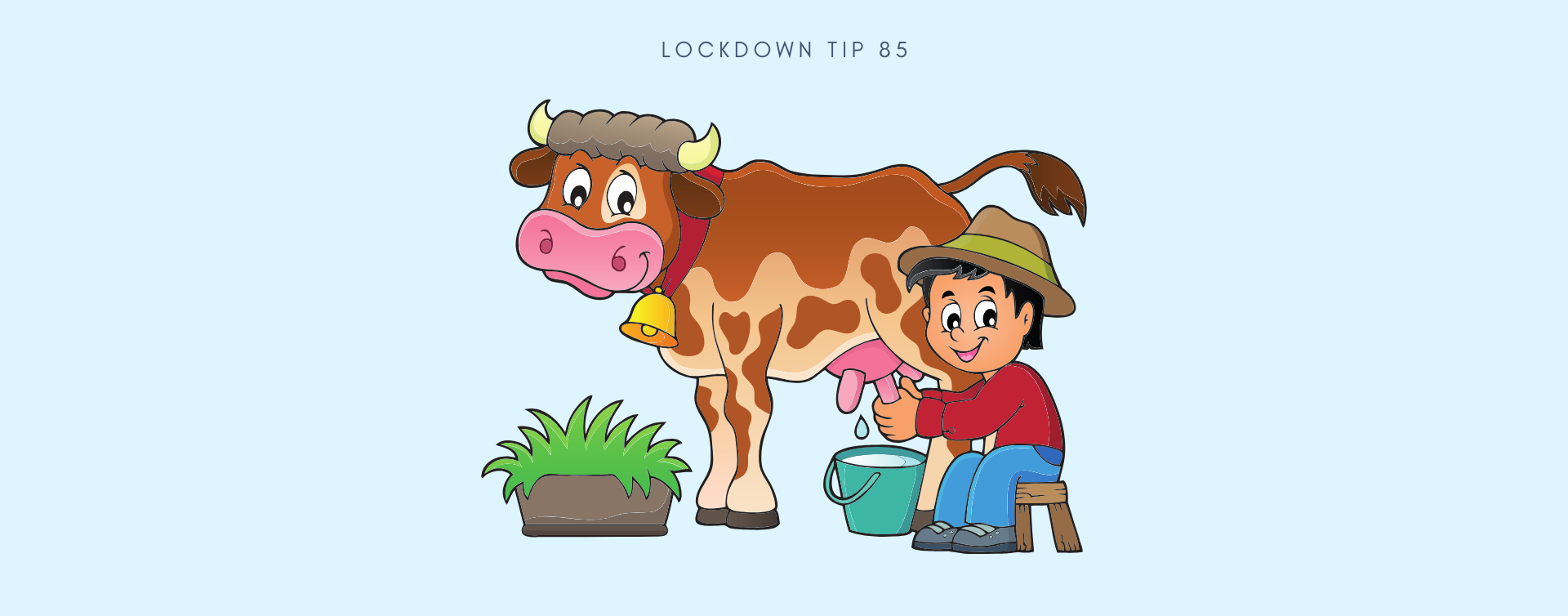Lockdown Day 85 – KUW
In the literacy lockdown tip #63, we looked at the farm and animals that one may find in a farmyard. Today, we go back to our national curriculum and pick up on two related outcomes for 5 to 6-year-old children – dairy and wool farming.
Helping the child to understand the relevance of these farming activities in their own lives will develop a deeper sense of belonging to the world and strengthen the idea that we all have a part to play in the interdependence of life on this planet.
*DAIRY FARMING*
Remind the child of the cattle family that s/he explored when doing the farm discussion. Reinforce the terminology of cow, bull and calf. Explain to the child that in the cattle family, the cow is the animal that provides us with milk.
Dairy farmers have a special grass called lucerne that the cows feed on to make the milk nutritious. Prompt the child to think about where s/he uses milk in her/his day. Perhaps in tea, maybe over cereal, and yes, in the tasty cake or other baking s/he may have done.
You can extend this conversation further to talk about the other dairy products that come from milk. Yoghurt, cheese, cream and maas, to name a few. You can engage in a conversation about these foods being full of a mineral called calcium which is important in building strong bones.
*WOOL FARMING*
Try and find an item of clothing or a blanket made of wool and ask the child if s/he knows what it is made of. Refer the child back to the farm lesson where the ewe, ram and lamb were discussed.
The sheep family is where we obtain wool, the very material the clothes/blanket is made of. It is a very warm material and very useful for humans, especially now in winter. Introduce new language like ‘sheep shearer’ – the person who shears (cuts) the wool from the sheep. Explain that this is having a haircut. Wool is then washed and carded (combed) to get rid of grass and blackjacks that the sheep may have picked up in the veld. Once this has happened, the wool is spun into strands which are used for weaving or knitting into clothes and blankets.
First prize would be to find a sheep farmer who could give you some unprocessed wool. Allowing the child to see the ‘beginning’ of the wool cycle is a valuable experience. This can be extended by setting up a small loom using a shoebox and string and inviting the child to weave a small table mat with a ball of wool. You may also introduce the child to finger knitting.
The more concrete the materials offered to the child, the more meaningful they will be.
Remember that quote from Aristotle: “There is nothing in our intellect that was not first in our senses.”
Enjoy!
****
Find all of our lockdown tips here – https://montessorisa.co.za/blog/



